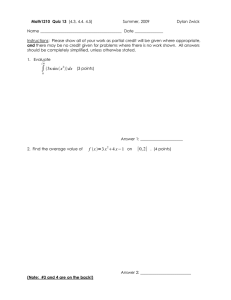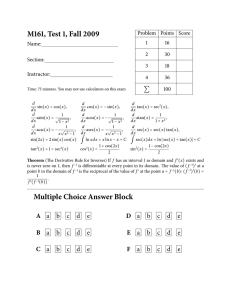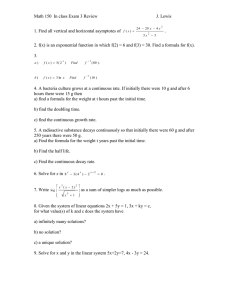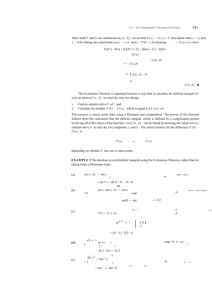Solutions Homework 1
advertisement
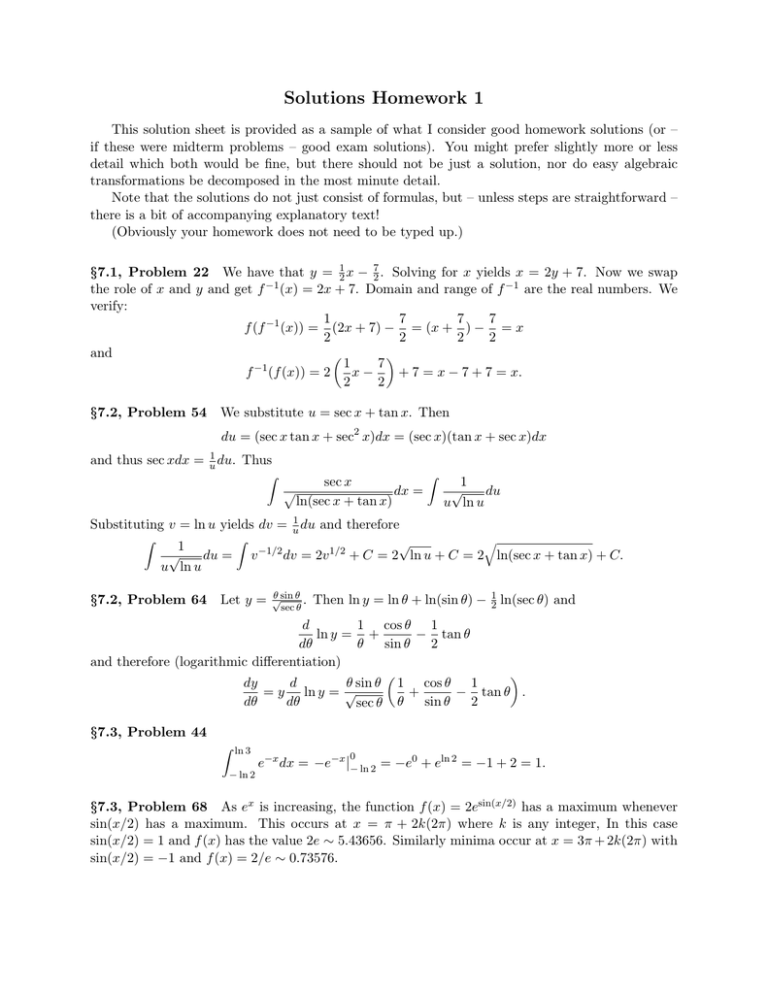
Solutions Homework 1 This solution sheet is provided as a sample of what I consider good homework solutions (or – if these were midterm problems – good exam solutions). You might prefer slightly more or less detail which both would be fine, but there should not be just a solution, nor do easy algebraic transformations be decomposed in the most minute detail. Note that the solutions do not just consist of formulas, but – unless steps are straightforward – there is a bit of accompanying explanatory text! (Obviously your homework does not need to be typed up.) §7.1, Problem 22 We have that y = 12 x − 27 . Solving for x yields x = 2y + 7. Now we swap the role of x and y and get f −1 (x) = 2x + 7. Domain and range of f −1 are the real numbers. We verify: 1 7 7 7 f (f −1 (x)) = (2x + 7) − = (x + ) − = x 2 2 2 2 and 7 1 x− + 7 = x − 7 + 7 = x. f −1 (f (x)) = 2 2 2 §7.2, Problem 54 We substitute u = sec x + tan x. Then du = (sec x tan x + sec2 x)dx = (sec x)(tan x + sec x)dx and thus sec xdx = u1 du. Thus sec x dx = ln(sec x + tan x) Z p Z 1 √ du u ln u Substituting v = ln u yields dv = u1 du and therefore Z Z q √ 1 √ du = v −1/2 dv = 2v 1/2 + C = 2 ln u + C = 2 ln(sec x + tan x) + C. u ln u §7.2, Problem 64 Let y = θ sin θ √ . sec θ Then ln y = ln θ + ln(sin θ) − 12 ln(sec θ) and d 1 cos θ 1 ln y = + − tan θ dθ θ sin θ 2 and therefore (logarithmic differentiation) dy d θ sin θ = y ln y = √ dθ dθ sec θ 1 cos θ 1 + − tan θ . θ sin θ 2 §7.3, Problem 44 Z ln 3 − ln 2 0 e−x dx = −e−x − ln 2 = −e0 + eln 2 = −1 + 2 = 1. §7.3, Problem 68 As ex is increasing, the function f (x) = 2esin(x/2) has a maximum whenever sin(x/2) has a maximum. This occurs at x = π + 2k(2π) where k is any integer, In this case sin(x/2) = 1 and f (x) has the value 2e ∼ 5.43656. Similarly minima occur at x = 3π + 2k(2π) with sin(x/2) = −1 and f (x) = 2/e ∼ 0.73576.
